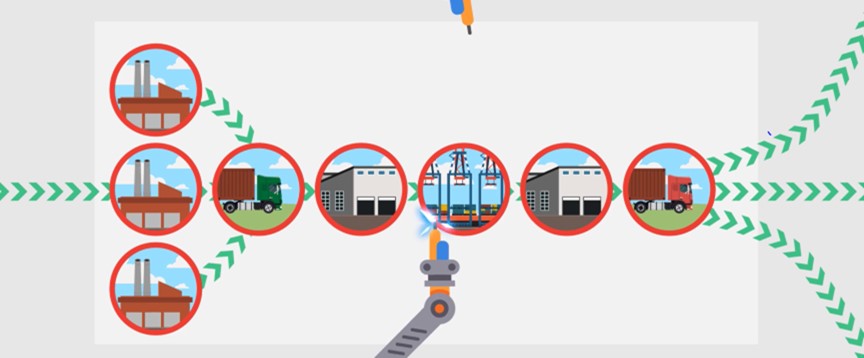
Manufacturers have learned many lessons from a series of global upheavals impacting efficiency and cost control. As industry leaders look to implement optimization techniques and inventory management tools to achieve the just in time (JIT) model, a successful business model will also require integration, while matching both demand and fulfillment for optimal planning.
Automotive supply chains typically look to transportation and shipping for cost savings, while separately managing the complexity of risk, compliance, and a diversified supplier base. This strategy, in the context of recent disruptions, may need to be rethought.
A shift towards a more agile manufacturing solution means the just in case (JIC) model will emerge as a strategy where companies keep inventory on hand to avoid the potential impact of a delay to production. Alongside this shift is the change in optimization strategies. An effective consolidation technique, commonly known as ‘buyer’s consolidation,’ promotes the opportunity to combine supply flows.
An important part of managing global suppliers is taking advantage of the benefits that come from consolidating less than container load (LCL) shipments into full containers. This allows companies to control the release of parts and know where they are in the supply chain, as close to real-time as possible. This enables easy decision making when unpredictability and risk need to be incorporated into your planning.
Take a look at our video for a quick overview of our Integrated LCL Consolidation program:
When evaluating your ability to effectively consolidate your LCL suppliers, here are some key questions to ask:
- How do you control your inbound supply chain?
- Does your part supplier dispatch on schedule?
- Is your advance shipping notice accurate and on time?
- Do your parts arrive to match your production needs?
- How much time and cost is attributed to managing risk?
- Do you have visibility and control of the supply chain as parts are transported?
- What systems are used to manage information flows?
If the parts are not delivered timely, the impact on a streamlined supply chain often results in a critical or urgent situation, which frequently requires additional labor, cost, and risk management. Effective visibility, either at the shipment or part level, as well as control of the supplier base, eliminates risk if integrated throughout the supply chain.
Consider the crucial steps to a successful LCL consolidation solution:
- What decisions can be made when the visibility of the supply chain is guaranteed?
- How automated and reliable is the information?
- Will decisions be made quickly in response to change?
- Is there consistency across the supply chain or only partly?
- What is the consequence of failure?
The benefit of integrating end-to-end part visibility is only realized when the seamless interaction of multiple parties and milestones are connected. Partial information and the loss of visibility impacts the integrity of the supply chain.
The lack of shipment or part visibility across different modes restricts the ability to plan, which leads to increased risk, cost, and inconsistency. Here are some things to consider:
- If you have part level visibility, what decisions can be avoided?
- If the consistency and accuracy of part level visibility are required, do each of your transport partners inter-connect information at each stage?
- If there is a gap, when and how do decisions need to be made?
- Can you use the information to consolidate and optimize inbound flows without the need to re-engineer the transport planning?
If your inbound supply chain does not have the desired level of real-time visibility at all times and production issues occur, the consequence of increasing inventory and transportation costs are inevitable.
If your partners do not have the desired capabilities, consider whether the benefits justify the use of technology. It is always important to look at the supply chain end-to-end.
- If supply chain visibility is achieved, what business decisions can be taken?
- How does the information flow support business strategies?
To support easy decision making and effective planning, you must ask the above questions to help evaluate the efficiency of your company's supply chain.
Many businesses demand visibility, yet are unable to change their internal processes leading to improved inventory control and demand planning. Streamlining the automation of data and avoiding the use of manual intervention enables the ease of making decisions and highlighting any bottlenecks.
Finding a service provider that understands all of these factors and can create tailored solutions that meet your needs is critical for achieving an integrated supply chain.
Our extensive expertise in this area has helped us create the Integrated LCL Consolidation solution, which can help you find a consolidation solution for your LCL demand via Expeditors' automotive centers of excellence. Reach out to one of our automotive experts for a customized needs assessment to incorporate visibility into your supply chain.



.png)
